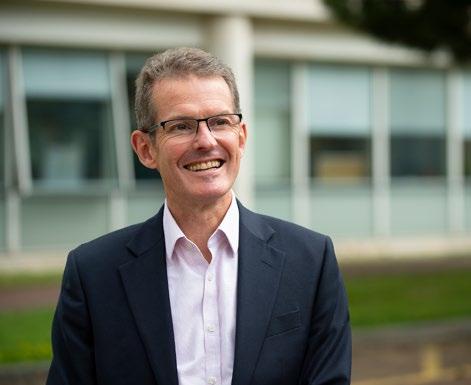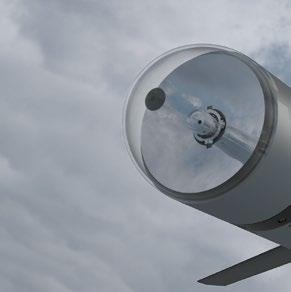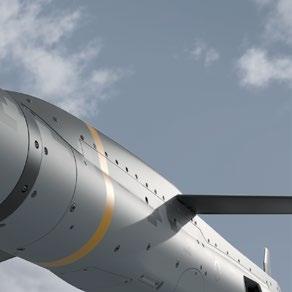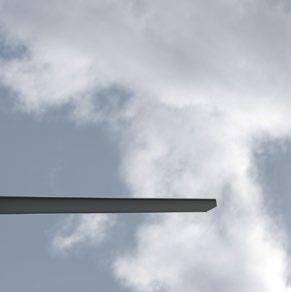
4 minute read
How can Defence keep innovating?
from March 2023
by Desider
Simon Dakin, DE&S Director Integrated Battlespace, talks to Desider about the steps DE&S needs to take to work as an innovative organisation.
I believe that DE&S has a vitally important role in driving innovation across Defence. This can come in many forms. First, we need to ensure that we consistently engage and understand the markets we work in, as well as the emerging technology coming from them, especially the civil sector (beyond traditional Defence suppliers), which is evolving at a dramatic rate.
Advertisement
DE&S teams have exceptional talent, expertise and enthusiasm, and there’s a real appetite to test, challenge and improve the way we do business across Defence, both in the business and battle spaces.
Key to accelerating innovation in DE&S is developing, exploring and trialling innovative approaches – especially in our commercial models. We need to engage with industry in a much more flexible and responsive manner, and then share and spread those ideas across Defence. We’ve got to act as an ‘exploitation engine’ for innovative ideas. We must make sure that bright ideas are pulled through and exploited by those on the operational front-line and not allowed to stay in the experimentation phase. If necessary, ideas should also be deliberately terminated if it is determined that there is no realistic chance of delivering benefit to the front-line in the necessary timescales.
We have seen DE&S at its best during times of crisis. Whether during the Covid pandemic or responding to the conflict in Ukraine, we’ve found new ways to deliver what’s required at the speed of relevance. We have risen to the challenge in an impressive manner for which we should be very proud. Much of that achievement has been through innovation – in what we do and how we do it.
Our strategy is to be highly collaborative with others in MOD, the front-line commands, research establishments, and partners both in industry and beyond UK Defence – bringing together communities to drive innovation, share lessons and spread good practice.
Strong DE&S engagement with MOD HQ and the Defence Innovation Unit, who invest in specific capability areas, is vital to drive innovation, such as maritime autonomous systems, expeditionary robotics, counter-uncrewed air systems, electronic warfare, modelling and simulation, high-value manufacturing, and directed-energy weapons.
Innovation is happening all the time, all around us, and we must encourage and recognise that. The world is moving fast. We need to do more than just keep up with our adversaries. We need to get ahead of them. But that will not happen if we keep doing what we have always done. We must continuously look for ways to get better and act on them, fast. Our front-line clients, our partners, the taxpayers and the nation deserve the very best from Defence. We must see these crises as a wakeup call. We need to learn the lessons and strive to adopt such impressive performance more widely.
We make better decisions with and for our customers, by applying our expertise in innovative technology, from advanced manufacturing, data analytics and digital twins to asset digitisation and green solutions.
We’re investing in the right capabilities now to deliver value for money in defence acquisition, achieve environmental targets and support our customers into the future.
President Zelensky’s recent visit to the UK underlined our significant role in helping Ukraine resist the Russian invasion. Nearly a year into the conflict, it is easy to forget how pessimistic many were about their ability to hold out against seemingly overwhelming Russian forces.
It is tempting to credit particular capabilities for their extraordinary performance: their use of drones and artillery, Starlink satellite communications, or anti-armour ambushes using the UK’s NLAWs. The reality was that it is Ukraine’s ability to adapt at speed which has made them so effective. This is the real lesson we need to draw from the Ukraine conflict – your national competitiveness is directly linked to the speed at which you can adapt, whether through repurposing existing capabilities or fielding new ones. Helping Defence do this is the Innovation Directorate’s central role. We are here to help turn ideas into new ways of operating to achieve advantage over our adversaries. The UK has an impressive track record when it comes to innovation: radar, decryption and the tank to name but three game-changers. But frustratingly, these innovations tend to be driven by a response to a crisis – we are less innovative when the pressure is off. And this is not because we lack novel ideas. We don’t have an invention problem, we have an exploitation one. The challenge is quickly turning successful prototypes and concepts into tangible capabilities and scaled approaches. This is where DE&S has a key role to play. Their role in the Ukraine conflict has been extraordinary. They helped ensure that verbal offers to “gift in kind” turned into physical weapon systems and ammunition in the hands of the Ukrainian Armed Forces. DE&S also helped Ukraine harness the incredible inventiveness of the UK’s small- and medium-sized enterprises. Their contribution has been far more significant than most people realise. Now we need to use that same focus, imagination and determination to help the UK turn inventions into scaled capabilities – getting new capabilities into the hands of those who need them more quickly. We can do this through embracing news ways of procuring technology, moving away from waterfall delivery of fixed specifications to agile delivery of constantly evolving capabilities, driven by intimate and sustained engagement with Defence personnel. It means reversing a paradigm where performance is the fixed variable, with cost and time as regulators, to one where time is the dominant factor, trading performance to get better (not necessarily the best) capabilities into the hands of users as quickly as we can. The bumper sticker phrase I use to sum up the change we need to make in Defence is: “put innovation on a war footing”. We have a senior leadership at the top of Defence that recognises the existential challenges we now face and is prepared to make the changes –cultural, systemic and structural – that are required to meet them. This is very much a One Defence approach, working across Defence and industry to deliver for the Armed Forces. I look forward to working with DE&S further, as part of its Strategy Refresh, to ensure it can play as significant role in transforming UK Defence as it has in turning the tide against Russian forces in Ukraine.




















